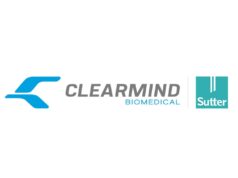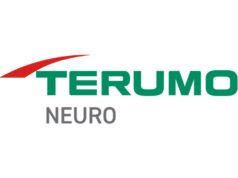 The entirety of the results from the ENRICH trial evaluating the early surgical removal of intracranial haemorrhage (ICH) have been published in the New England Journal of Medicine (NEJM). As stated in a Nico Corporation press release, ENRICH demonstrated early minimally invasive parafascicular surgery (MIPS) intervention using the company’s BrainPath and Myriad technologies to treat ICH is safe and superior compared to the current standard of care: guideline-based medical management (MM) alone.
The entirety of the results from the ENRICH trial evaluating the early surgical removal of intracranial haemorrhage (ICH) have been published in the New England Journal of Medicine (NEJM). As stated in a Nico Corporation press release, ENRICH demonstrated early minimally invasive parafascicular surgery (MIPS) intervention using the company’s BrainPath and Myriad technologies to treat ICH is safe and superior compared to the current standard of care: guideline-based medical management (MM) alone.
The ENRICH trial—a randomised, multicentre, adaptive clinical study—met its primary endpoints, indicating that MIPS improved outcomes for ICH patients owing to a statistically significant improvement in utility-weighted modified Rankin scale (UWmRS) scores at 180 days (MIPS, 0.458 vs. MM, 0.374). This difference showed a 98.1% posterior probability of superiority of MIPS compared to MM (95% confidence interval [CI], 0.005–0.163). In addition, MIPS was seen to have led to a reduced mortality rate at 30 days compared to MM (9.3% vs. 18.1%, respectively), and the approach also produced significantly decreased intensive care unit (ICU) length of stay (LOS) and hospital LOS with reductions of 2.8 days, and 3.1 days, respectively.
“The results of the ENRICH trial not only demonstrate the efficacy and safety of MIPS, but they also herald a transformative milestone for the entire stroke community, changing the ICH treatment paradigm through a standardised approach and advanced technology,” said Gustavo Pradilla (Emory University School of Medicine/Grady Memorial Hospital, Atlanta, USA), co-lead investigator for ENRICH. “The ability to maximise the amount of clot evacuated in a safe manner is a pivotal advancement. We are steadfast in our commitment to collaborate with the medical community to educate on these interdisciplinary practices, and foster their widespread adoption across institutions and specialties. Together, we aspire to significantly improve the outcomes and lives of ICH patients, caregivers and loved ones.”
The ENRICH trial was set up to evaluate the efficacy, safety and economics of a standardised, early MIPS approach—performed within 24 hours—across 300 patients with spontaneous haemorrhagic stroke. Of these patients, 92 had a haemorrhage in the anterior basal ganglia (ABG) location and 208 had a haemorrhage in the lobar location. The trial enrolled patients at 37 stroke centres across the USA, with these patients being randomised to either a treatment group involving MIPS or a control group involving MM. The treatment group saw patients undergo procedures utilising two of Nico’s patented technologies: BrainPath, which the company claims is “the world’s first and only” system that achieves minimally disruptive access using a trans-sulcal and parafascicular surgical approach, and Myriad, which provides automated, non-ablative tumour removal and haemorrhage evacuation.
The primary intention-to-treat analysis of ENRICH evaluated whether average disability outcomes at 180 days, assessed via UWmRS scores, were superior in patients treated with MIPS compared to those who received MM alone. Safety endpoints were mortality at 30 days, and changes in haemorrhage volume from index to 24-hour computed tomography (CT) scan, while economic endpoints pertained to quality-adjusted life years (QALY) at 90, 120 and 180 days post haemorrhage.
Nico’s recent press release states that, overall, ENRICH showed that early MIPS intervention led to improved functional outcomes and increased safety, and demonstrated statistically significant economic improvements. As per one of the trial’s prespecified secondary endpoints, at each timepoint (7, 30, 90, 120 and 180 days), ordinal logistic regression analysis showed that the mRS-measured treatment effect was favourable in the MIPS group. Another prespecified secondary endpoint saw a significant reduction of 44mL in average haemorrhage volume within the MIPS group, compared to an increase of 4mL in average volume in the MM group—and the end-of-treatment volume goal of <15mL was achieved in 73% of patients in the MIPS group as well.
The company’s release also highlights multiple exploratory clinical endpoint findings from the trial, with one of these being that the mean number of ventilator days was significantly lower in the MIPS group versus the MM group, as per a reduction of 3.5 days. Furthermore, decompressive hemicraniectomy procedures were performed in 20% of MM group patients compared to only 3.3% of MIPS group patients.
Another finding from ENRICH was that in-hospital mortality was 4.7% in patients treated with surgery, which compared favourably to the 12.7% seen in the control group. All-cause mortality at final follow-up was similar between the two groups, as 30 patients in the MIPS group (20%) and 35 in the MM group (23%) had died at 180 days, giving rise to a combined mortality rate of 21.7% across the whole study. ENRICH investigators also found that the treatment group experienced 15% fewer serious adverse events versus the control group (MIPS, 95 [63.3%] vs. MM, 118 [78.7%]). Five patients treated with MIPS experienced rebleeding with clinical deterioration after surgery—a rate of 3.3%—and, “notably”, according to Nico’s recent release, there were nine patients with reported cardiac arrest in the surgical group compared to just two in the control group.
The primary outcome results of the ENRICH trial were initially reported last year, at the 2023 American Association of Neurological Surgeons (AANS) annual scientific meeting (21–24 April, Los Angeles, USA), and demonstrated that the trial met its primary efficacy and safety endpoints at six months. Nico claims that, based on the trial design, the MIPS approach was found to be superior to MM for haemorrhages in the lobar location and statistically neutral in the ABG location—leading investigators to conclude their NEJM paper by stating that “the effect of surgery appeared to be attributable to intervention for lobar haemorrhages”.
The company is also expecting to announce further results from ENRICH, including economic outcome results that will quantify the cost per QALY gained through the MIPS treatment approach at specified timepoints. In addition, Nico has said it is anticipating a surgical outcome paper that will consist of a complete review of all 150 surgically treated patients.
“With its high rates of morbidity and mortality, and the combined cost of both acute treatment and long-term recovery, ICH is the costliest, most deadly and debilitating form of stroke—but, despite these facts, no surgical approach has produced level-one evidence to intervene until now,” said Jim Pearson, president and chief executive officer of Nico. “The success of our trial on MIPS for ICH demonstrates the pivotal role of safe and effective clot removal using our technology, coupled with early intervention. With intervention initiated within 24 hours—an average of 16 hours for trial participants—the MIPS group achieved a significant, 88% median haematoma volume reduction and improved mortality compared to the standard of care. The results from the trial are clear: the more effectively and quickly we remove blood off of the brain, the greater the patient’s chance of functional recovery and survival.”










